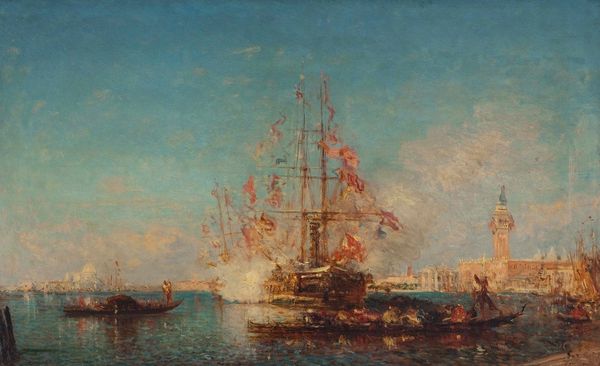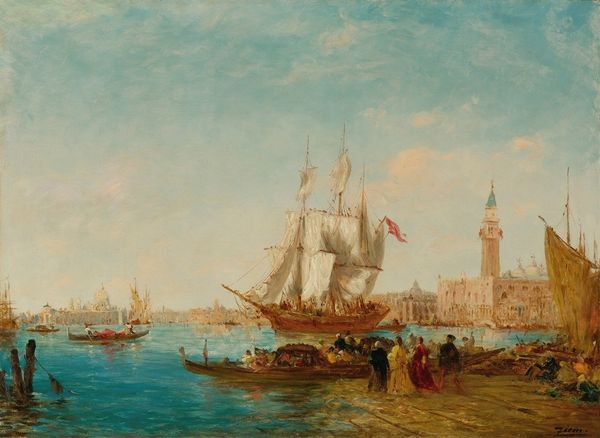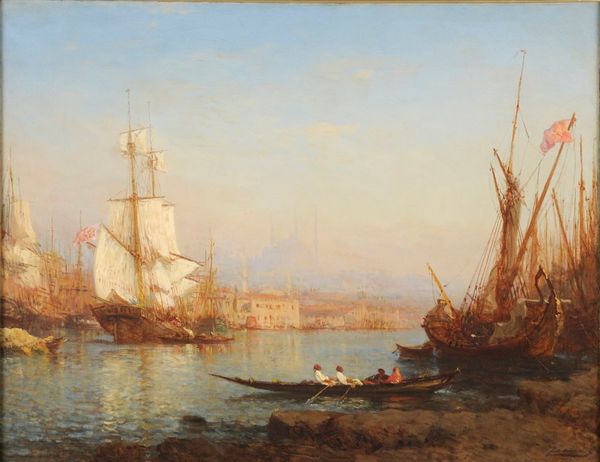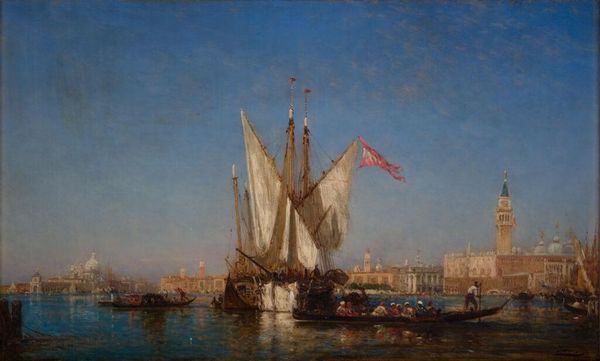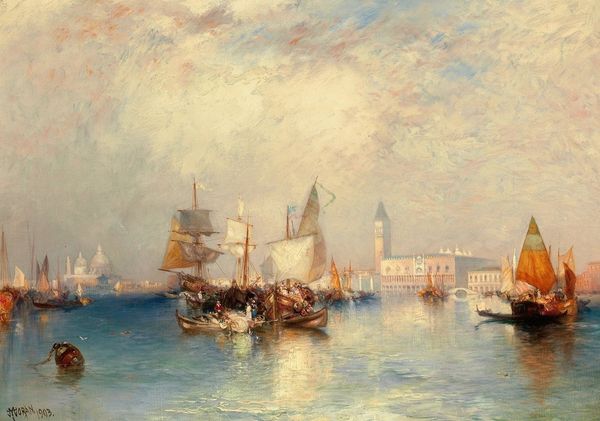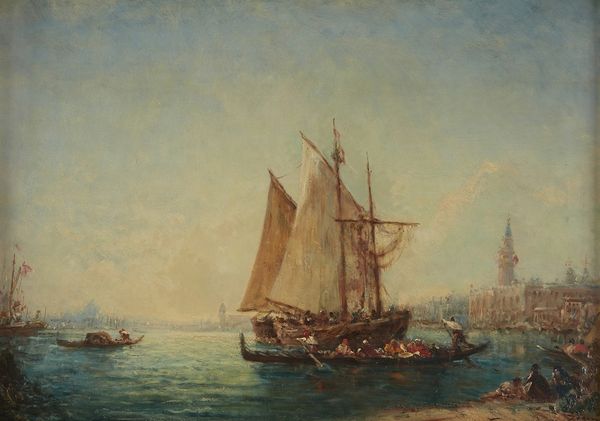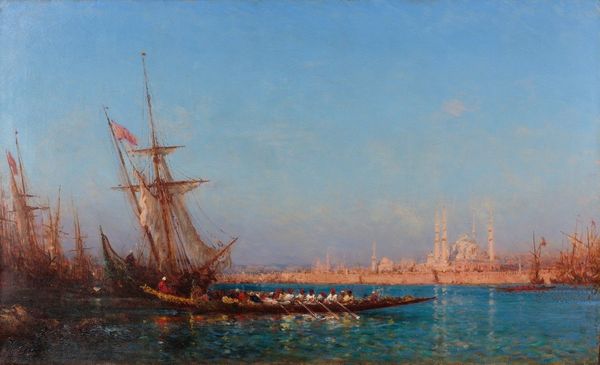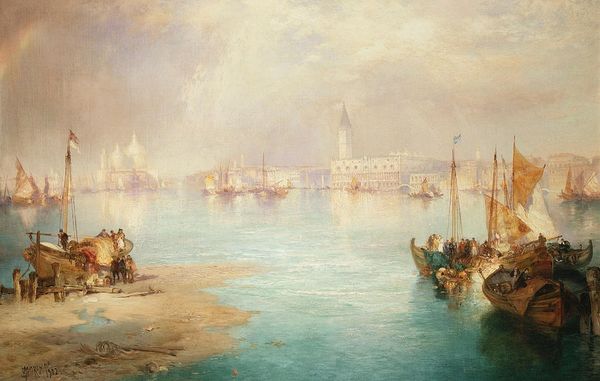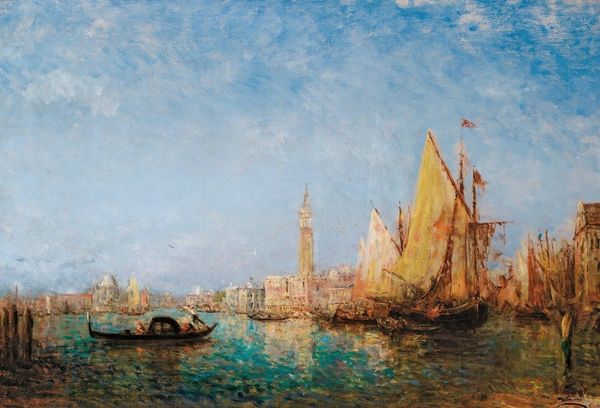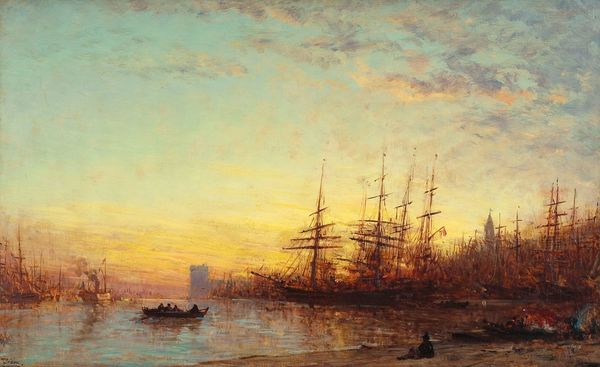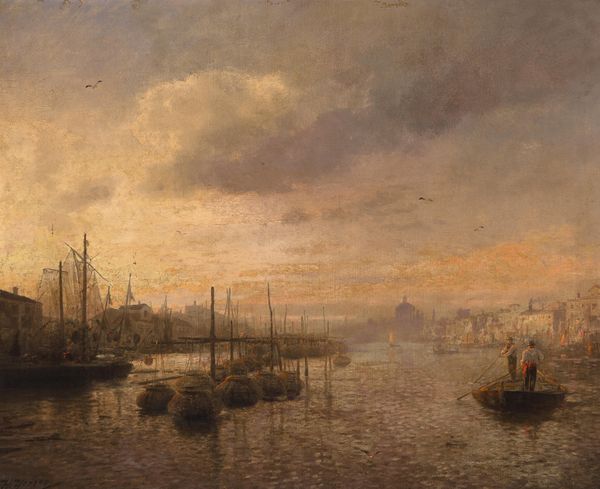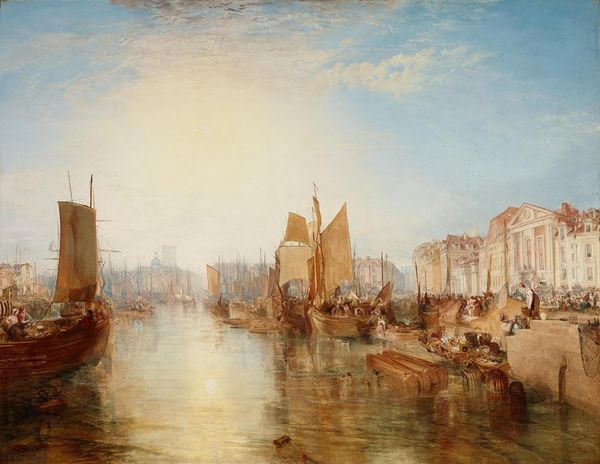
oil-paint, impasto
#
baroque
#
oil-paint
#
landscape
#
impressionist landscape
#
oil painting
#
impasto
#
cityscape
#
realism
Copyright: Public Domain: Artvee
Curator: Before us hangs Felix Ziem's, The entrance to the canal, Marseille, an oil painting on canvas. Editor: The shimmering blues and yellows initially strike me, evoking a tranquil yet active harbour scene, reminiscent of Venetian paintings. It's both realistic and a bit dreamlike. Curator: Ziem, while often associated with the Barbizon school of painting, cultivated a very personal impasto technique. Observe how he layers and manipulates paint, generating textures, building up the forms and infusing light and a tangible sense of atmosphere throughout the whole composition. Editor: And looking closer, the city here takes on a hazy quality. It makes me wonder what the political situation of Marseille was during this period, if its openness to trade and maritime activity factored into the piece at all? Curator: While undated, it shares affinities with Ziem's cityscapes after 1860, and reflects the transformation of Marseille with increasing trade. His emphasis, though, is undeniably on capturing the dynamism and brilliance of the port rather than documenting specifics. Editor: Right, that certainly comes through! There’s a feeling of bustling maritime commerce – the many small figures on the ships, the variety of vessels depicted – all points towards this image serving as a depiction of industrial activity and port life. But where do we, as the observer, fall into the social politics depicted? Curator: I'd agree, though Ziem focuses on aesthetics more than strict socio-political narrative. The chromatic interplay, the brushwork's verve — these compositional features take precedence over conveying distinct statements about labour and society. His baroque approach emphasizes visual stimulation over political context. Editor: But shouldn't art offer more than just chromatic interplay? Shouldn't it reflect upon society in some capacity or ask for an intentional understanding? Curator: Its artistic merit, I would say, lies in its formal qualities rather than social commentary. Editor: Well, regardless, it's fascinating to consider both perspectives; the painting’s visual attributes, and its potential socio-historical implications. It does create such a stimulating dialogue, no? Curator: Yes, art often thrives in the space between interpretation.
Comments
No comments
Be the first to comment and join the conversation on the ultimate creative platform.
